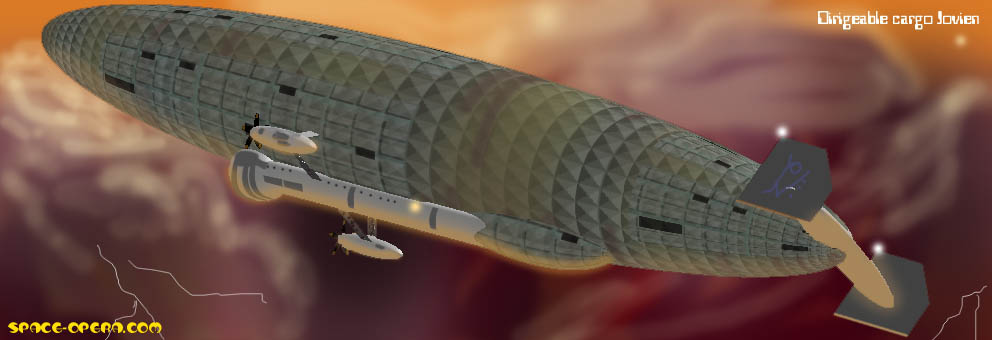Jovian Airships

For nearly seven centuries, the dense atmosphere of Jupiter was furrowed by "dirigibles" of a design perfectly adapted to the very particular climatic conditions of the place. Filled with abundant methane, they have an internal fusion battery that powers the batteries of propeller engines. Its carbon structure is not deformed and does not fear the most violent temperature and pressure differences. Jovian airships were built in one of the five largest orbital stations, one with the heavy equipment needed for their carbon structure. Cargo ships could measure up to 350 meters and carry 5,000 tons of freight in their holds. They only had atmospheric flight capabilities and had to be coupled with rocket "tugs" to access the orbital space. Their solidity and their lightness was such that the "wrecks" of "joaircips" (the ancient name of these machines), still floated in the lower layers of the atmosphere, brought up by the strong winds of evaporation of warmed liquid methane. Some of them also served as floating cities, and auyres were assembled together with heteroclytic structures to form rudimentary atmospheric bases.